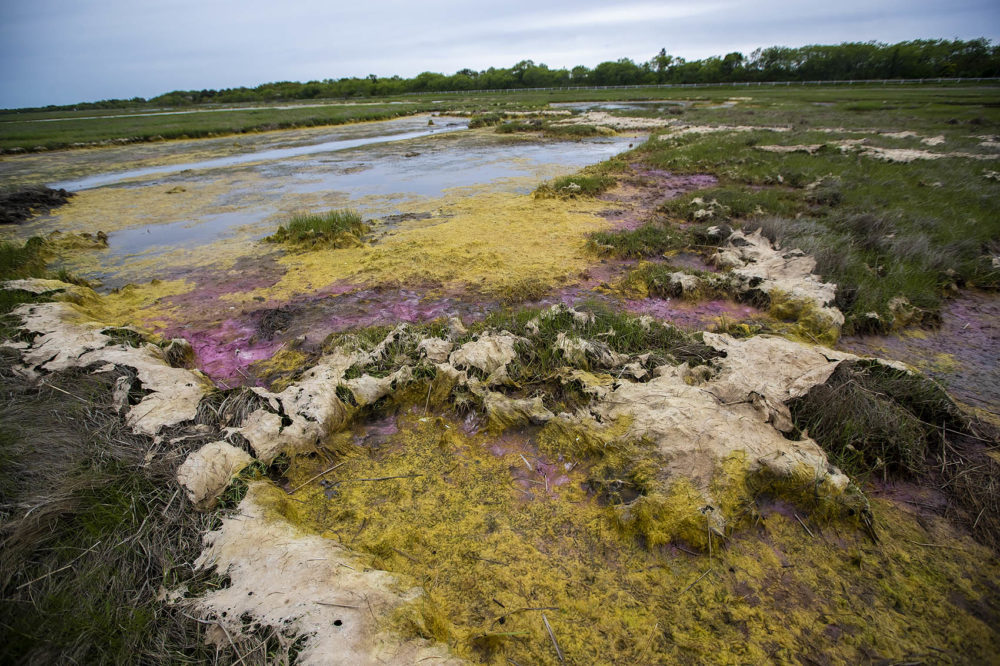Pull The Plugs: How A Simple Move May Help Plum Island’s Salt Marshes Adapt To Sea Level Rise

Colorful algae forms in the stagnant water behind emabankments. The embankments will be removed in order allow the water to ebb and flow freely in and out of the marsh lands. Photo by Jesse Costa for WBUR
Walking through the Parker River Wildlife Refuge on Plum Island with wildlife biologist Nancy Pau is to take a tour through the various ways humans have disrupted the saltwater marsh for the last 300-plus years.
The area is filled with what Pau calls “legacy infrastructure” — colonial-era irrigation canals and 20th century mosquito control ditches.
These drainage canals were good for 18th century hay farmers and 21st century residents concerned about mosquitoes, but Pau says they weren’t good for many animals and the marsh’s overall health. So beginning in the 1990s, scientists tried to fix the problem by blocking some ditches with small “ditch plugs” made from soil.
“It worked and we got water back onto the marsh,” Pau says.
But it may have worked too well, leading to an effort today to reverse decades of well-intentioned meddling in the marsh and help protect it against sea level rise by mimicking nature.
“Our concern about too much draining has shifted, and the concern now is that the marsh is getting too much flooding,” she says. “It’s important for the marsh to get flooded, but also for the water to come back off. Anything that interrupts either of those two processes can negatively impact the marsh.”
